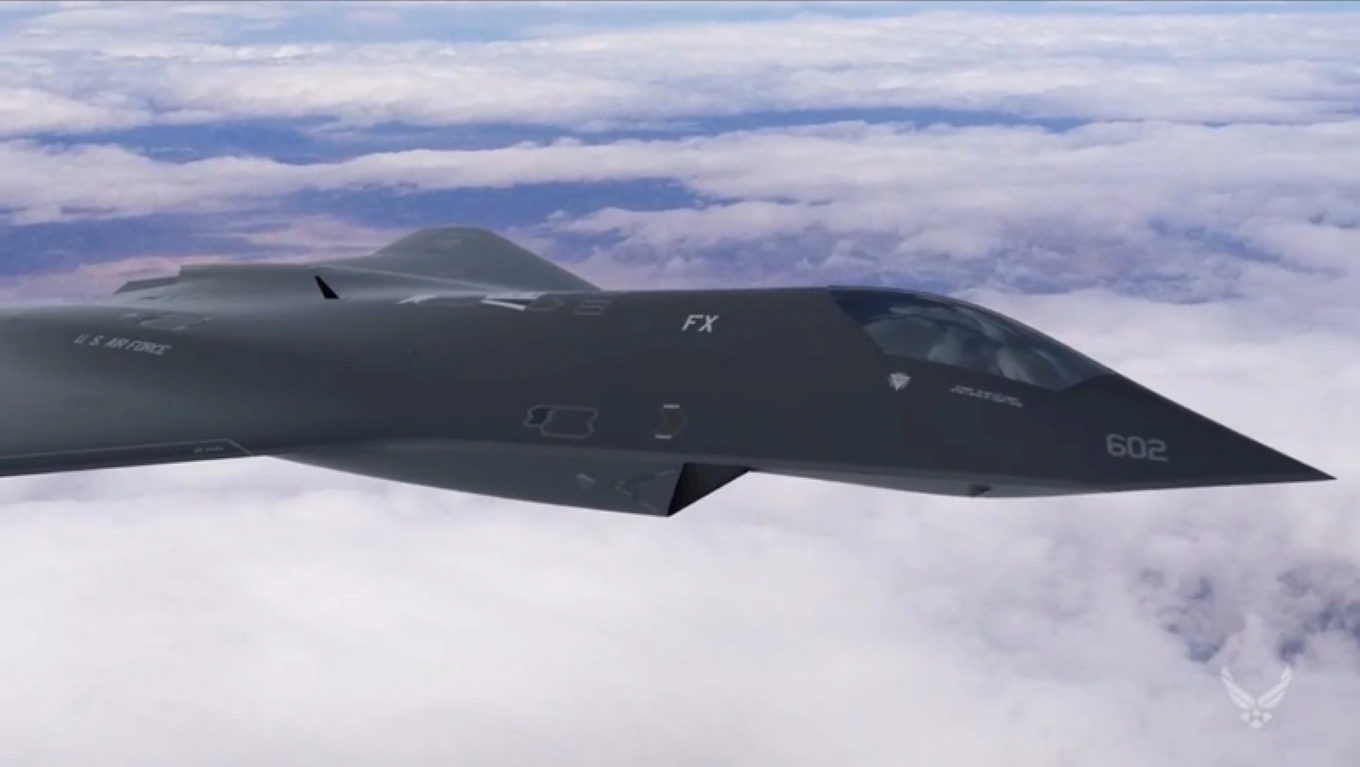Military
How a New Fighter Plane Could Disrupt the Defense Industry

Published:
Last Updated:

A year ago, the U.S. Air Force’s chief acquisition officer, Will Roper, announced a new approach to the development of a new Air Force fighter jet. Earlier this week, Roper confirmed that the Air Force had designed, built, and flown a prototype of the new plane.
Details of the Next Generation Air Dominance (NGAD) program remain cloaked in secrecy. According to a report at Defense News, Roper stressed the significance of the speed with which the Air Force was able to get a prototype of the fighter into the air. The Air Force has proved that it can use advanced manufacturing technologies to build and test a “virtual version of its next fighter” and then proceed to building and flying it “with mission systems aboard.”
Roper did not disclose which defense contractor made the prototype plane (or planes), but there are really just three suspects: Lockheed Martin Corp. (NYSE: LMT), Boeing Co. (NYSE: BA), and Northrop Grumman Corp. (NYSE: NOC).
Lockheed’s F-35 and Boeing’s F-15EX are, respectively, fifth-generation and fourth-generation fighters and both have long development histories and long lifetimes. Northrop Grumman’s B-21 bomber has been in development since the contract was awarded in 2015 and the first flight tests are currently expected to take place by the end of next year with the planes entering service in 2025.
There are two primary reasons that the Air Force is working on quicker development of new aircraft. First, obviously, is a shorter time to get new technologies into the air. Lockheed’s F-35 flew its first demo flight in 2000 and the company was awarded the contract to build the new planes a year later. The first of the new planes to fly took off in 2006 and production deliveries began in 2011. Adding in all the pre-award development adds at least another 10 years to the timeline.
Second, and perhaps more important, is a fighter jet’s life expectancy. The F-35, for instance, is targeted for a flying life of 30 years or more. During that period, maintenance and upgrade costs represent the majority of the profit that Lockheed will earn on the plane. When an aircraft gets to be 15 years old, maintenance costs rise by 3% to 7% every year
In a paper he published earlier this year, Roper estimated that NGAD’s strategy would shave 10% off the cost of an aircraft with a 30-year life cycle. According to Roper, new technologies would be inserted in small lots (75 planes) every eight years and earlier versions of the plane would be retired after 15 years of service.
The implications of such a scheme are considerable. First of all, can Lockheed, Boeing, and Northrop meet such relatively short timelines? Can they make a profit if maintenance contracts longer than 15 years are no longer needed?
According to Roper’s paper, development costs to meet the eight-year turnover would rise by 25% and production costs would increase by 18%. Modernizing costs, however, would drop by 79% and sustainment costs would be halved.
And perhaps most important, the NGAD strategy practically begs for new entrants. Would Tesla CEO Elon Musk be interested in starting a military aircraft company? Maybe not because he has already declared the fighter jet era over and expects drones to be the weapon of choice in the near future. But there are other startup aircraft makers working on electric and hypersonic airplanes.
Retirement planning doesn’t have to feel overwhelming. The key is finding expert guidance—and SmartAsset’s simple quiz makes it easier than ever for you to connect with a vetted financial advisor.
Here’s how it works:
Why wait? Start building the retirement you’ve always dreamed of. Click here to get started today!
Thank you for reading! Have some feedback for us?
Contact the 24/7 Wall St. editorial team.